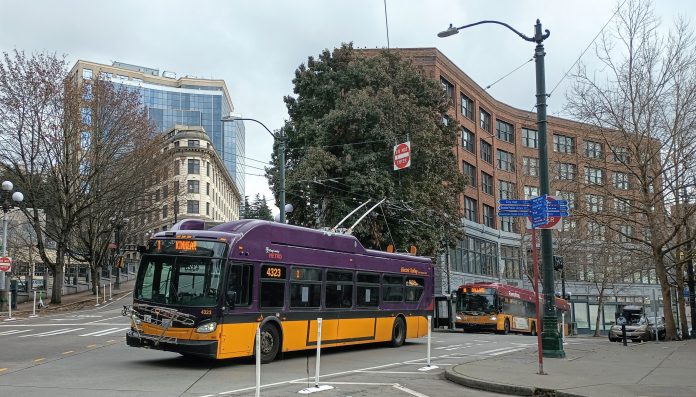
The Seattle Department of Transportation (SDOT) has announced a slate of improvements to Third Avenue, the city’s busiest bus corridor, that include a planned extension of transit-only restrictions three additional blocks north into Belltown, as well as other amenity and safety upgrades. Most of these upgrades are set to be implemented in 2024.
Since 2018, general purpose vehicles have been prohibited from travelling more than one block on Third Avenue downtown for the bulk of the day, but only between Yesler Way and Stewart Street. But the street sees significant bus volumes well into Belltown, so extending the transit mall is a logical step, and one transit advocates (The Urbanist included) have been calling for since 2019, with a request to extend bus lanes all the way to Denny Way.
After the City’s planned change, vehicle drivers will not be able to travel more than one block between Stewart and Blanchard Street, and taking left turns onto the street from Lenora and Virginia Street will also become prohibited.

A city website originally listed the three-block extension of the transit mall as scheduled for this fall, but that timeline has now been changed to fall of 2024. SDOT Press Secretary Ethan Bergerson attributed this change in timeline to a need to “better align with other planned transit improvements on 3rd Ave.”
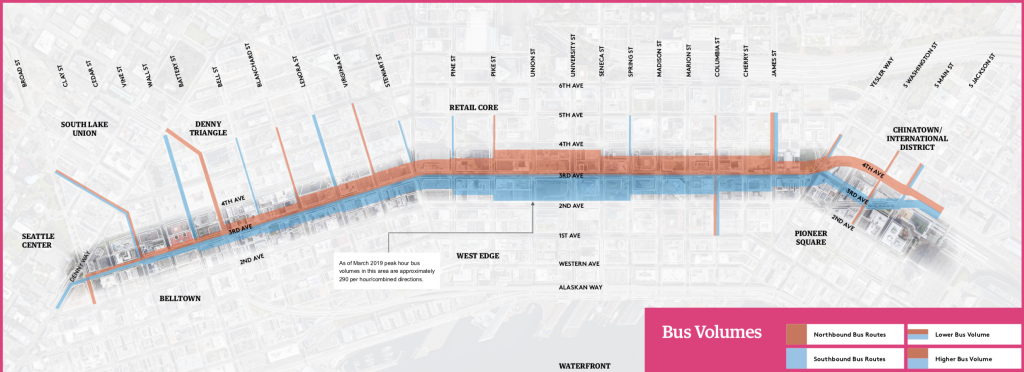
The delay underscores the slow pace of implementing high-impact transit improvements, with a northbound bus only lane on Rainier Avenue between Mount Baker and Judkins Park Station taking more than two years to implement, and set to be installed next year as well. With more and more workers returning to in-person work, adding spot improvements that get transit riders past traffic backups is becoming incredibly urgent, but the number of miles of new dedicated bus corridors that the city has been able to add recently has been very limited.
King County Metro has announced a plan to cut bus service by 4% in the fall due to its labor shortage, but unfortunately little seems to be in the works to get more out of the service hours we do have. An aggressive rollout of bus lanes could stem the bleeding from service cuts.
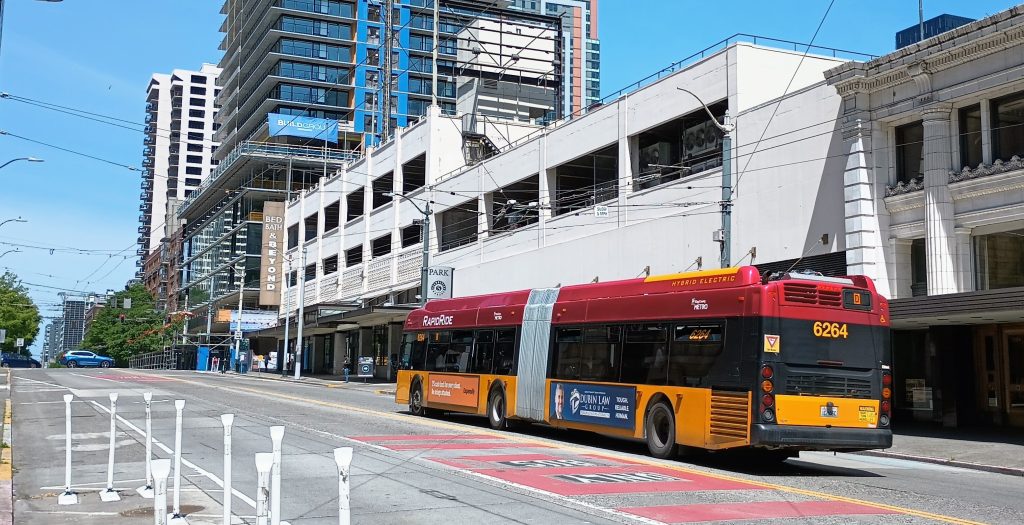
On the other end of the corridor, bigger physical changes are planned. SDOT will make permanent changes that were piloted around Third Avenue and Yesler Way last year, when lanes were narrowed to reduce crossing distances for people walking. Now only one lane feeds onto the primary Third Ave corridor from the south, but this hasn’t had a negative impact on bus travel times. The permanent improvements will also realign the bike crossing across Third, and add more curb bulbs that reduce crossing distances on additional legs of the complicated intersection. These improvements should make the newly reopened City Hall Park next door more accessible.
Additionally, the City plans to repave the bike lane along Dilling Way, which saw a quick-build bike lane installed in 2021 but is still a bit of a bumpy ride. SDOT is hoping to use this as an opportunity to add street trees, improve wayfinding in the area, and potentially add opportunities for art. These Third Ave and Yesler Way improvements are heading toward final design this year and are set to go into place in the first half of 2024.
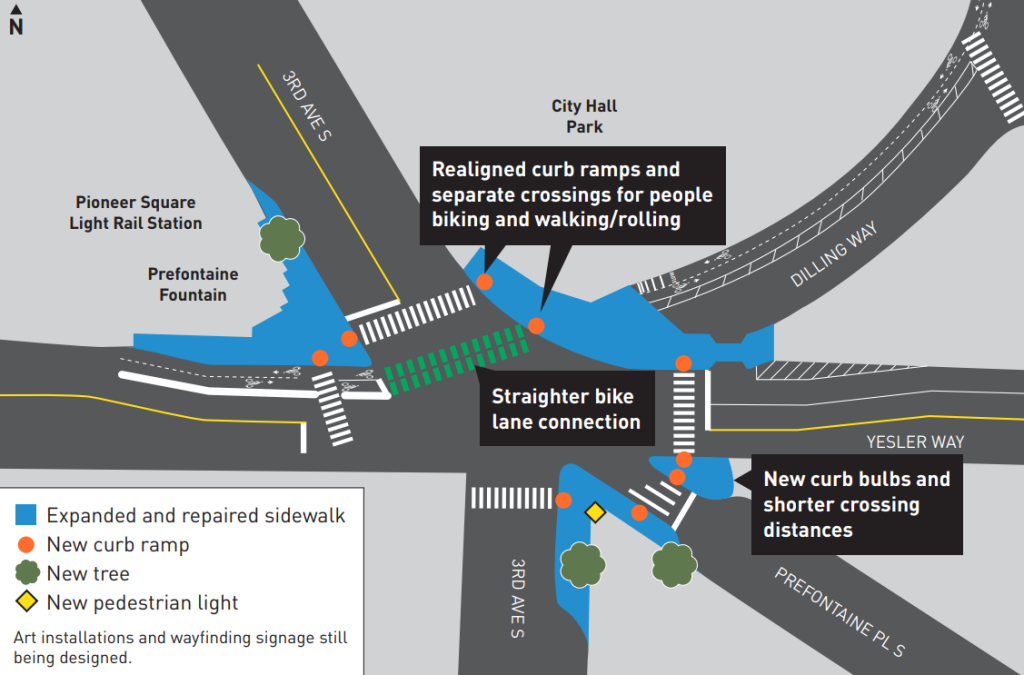
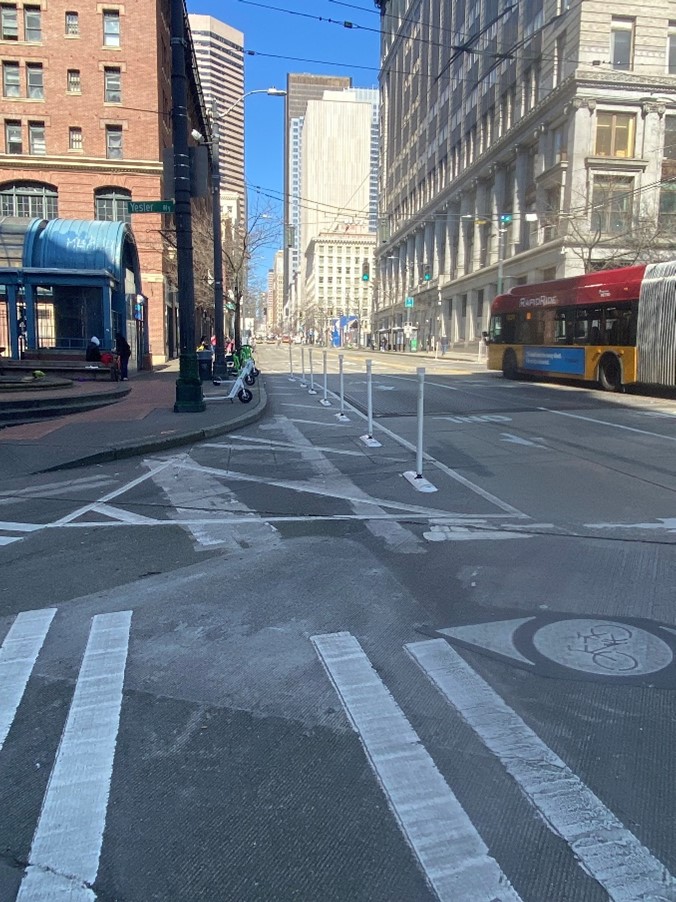
The Urbanist already reported on plans to upgrade and expand one of Third Avenue’s most-used southbound bus stops, between S Washington and S Main Street, converting that block of the street to one-way operation, with an expanded sidewalk and fully rebuilt concrete street. The repaving here can’t happen soon enough, with significant potholes currently pretty conspicuous to riders, and this stop frequently experiences overcrowding.
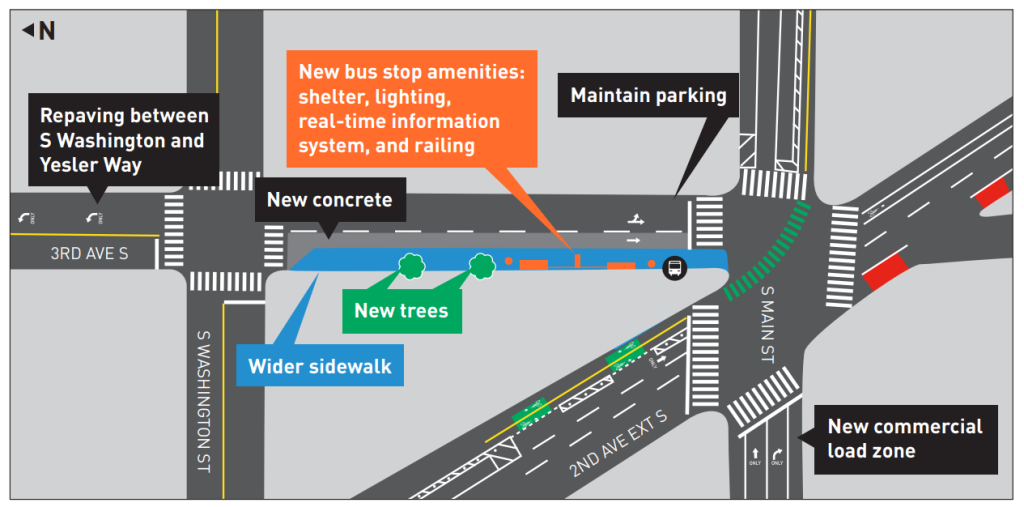
Corridor-wide, SDOT also announced that they’ll be working with Metro to replace the old (and mostly broken) real-time information kiosks up and down Third Avenue with updated displays, “e-ink” screens that have been deployed fairly widely elsewhere in the system. The department also noted that as part of the corridor upgrades, Third Ave between Virginia and Pine Street will be repaved in 2024 along with the section of the street between Yesler Way and S Main Street, providing smoother trips for bus riders.
These changes are happening against the backdrop of the city council’s full endorsement of the Downtown Seattle Association’s pursuit of a new vision for the entire transit corridor, one that could potentially open the door to the street stepping back from being the primary transitway through downtown Seattle, though that’s not likely to happen anytime soon. SDOT’s latest round of investments in the corridor are a good reminder of the fact that there’s still a lot of things that can be done to make the corridor work better for transit riders.
Ryan Packer has been writing for The Urbanist since 2015, and currently reports full-time as Contributing Editor. Their beats are transportation, land use, public space, traffic safety, and obscure community meetings. Packer has also reported for other regional outlets including BikePortland, Seattle Met, and PubliCola. They live in the Capitol Hill neighborhood of Seattle.

